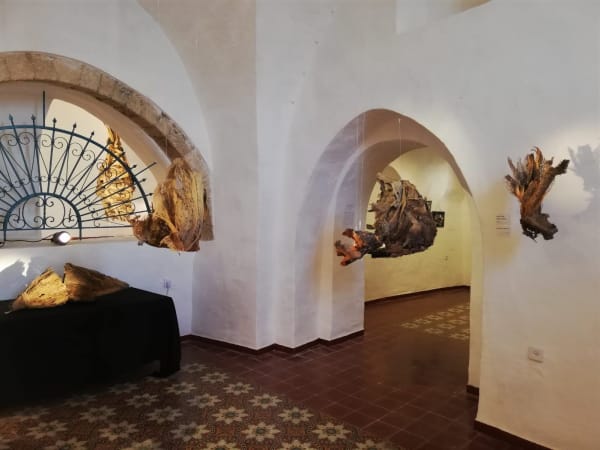The State of the Prickly Pear: Shai Zakai
Omer Tiroche Gallery is proud to present The State of The Prickly Pear, a solo exhibition by Shai Zakai curated by Mor Reshef Sivan. The title of the exhibition plays on the dual meaning of the Hebrew word “Tzabar”: either a prickly cactus that is commonly found in Israel, or the nickname assigned to a native Israeli. Zakai plays and draws a metaphorical comparison on the two meanings, likening her concerns over the cactus’ imminent danger of extinction and the gradual disappearance of traditional characteristic that make up the Israeli Tzabar. She also assigns a double meaning to the word “State” which is used in the title of the exhibition, to reflect the deterioration of both the country’s ecological landscape, as well as its barely recognisable founding morals.
The prickly pear, originating from Mexico, was commonly found in both wild and domestic settings in Israel. Unfortunately, due to the lack of ecological awareness, parasites that fed of the plant were unwittingly imported and, as such, dramatically diminished the number of existing cacti. Zakai makes not only symbolic comparisons between the current fragile positions of both Tzabar’s, but also derives parallels between the physical appearance of the prickly pear with that of the typical distinctive traits of the Tzabar Israeli’s; both can be “prickly” on the outside but delicate and fragile on the inside. As part of the cactus’s life cycle, its sheds its fleshy green skin and reveals its skeleton; the ‘Xylem and Phloem’, which Zakai uses as a basis for her art.
In the exhibition, Zakai re-interprets the prickly pear through a variety of different media, such as photography, sculpture, painting and installation. Zakai uses her work as case studies for the potential erosion of values in Israeli culture. In an age where everything is perishable, she reminds the viewer of what has been lost, as well as what is at risk. This element in her work, stemmed from her own observations of the dramatic environmental changes that she noticed during her daily walks in the forest where she lives and works. Therefore, significantly Zakai incorporates and “upcycles” organic materials and found objects from her surrounds into her work.
Through a series of photographs featured in the exhibition, Zakai aims to revive destroyed landscapes and give them new life. She also reflects on rebirth and survival in her piece, The Lichens, which depicts a living fungus that clings to a dead fig tree, illustrating that new life can emerge through death.
Zakai further addresses human’s role in the destruction of nature with her installation, Sea Talks. This work is made up of fragments of painted tiles that are commonly found in and around Old Jaffa, which often end up discarded into the sea and then wash ashore, polluting the coast. Zakai rituallistically collects and “upcycles” these items, incorporating them into her work, with meditation.
In the final room of the exhibition, Zakai has invited six artists, each of whom specialize in different media, to continue the discussion. She asked them individually to respond to the question:
“If the prickly pear were to be extinct, what plant would you like to be?”
Featured artists: Dvorit Ben-Shaul, Hadar Kleidman, Sabina Massage, Iigal Sarna, Eran Spitzer and Manuel Kleidman.
Shai Zakai, is a multi-media artist, photographer and a pioneering ecological artist, curator, lecturer, holistic therapist and author of the books; Faces and Facets (Portrait of a Woman), Forest Tune – The Library, and Presencehood. She has also founded a number of ground-breaking public ecological art projects, as well as representing Israel in various international exhibitions, such as at the Biennale in Gongju in South Korea, and at ‘Art & Global Warming’ in the US. Zakai has exhibited in more than seventy exhibitions, both in local and international museums and galleries and has won prizes, such as the Photography Biennale’s prize at the Ein-Harod Contemporary art Museum.







